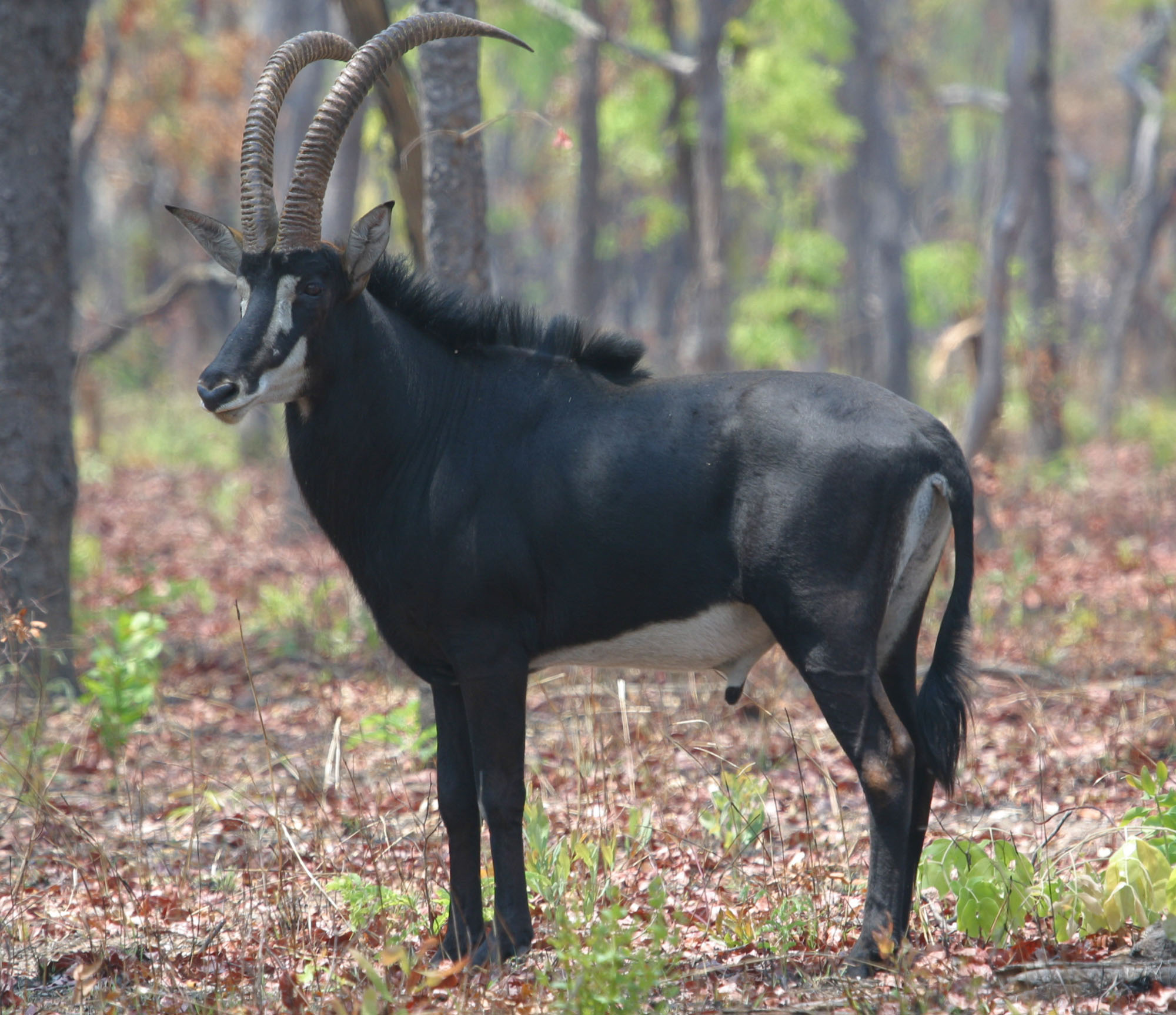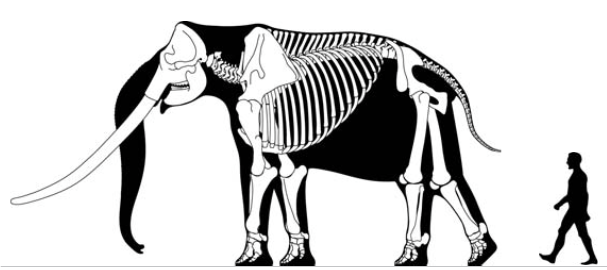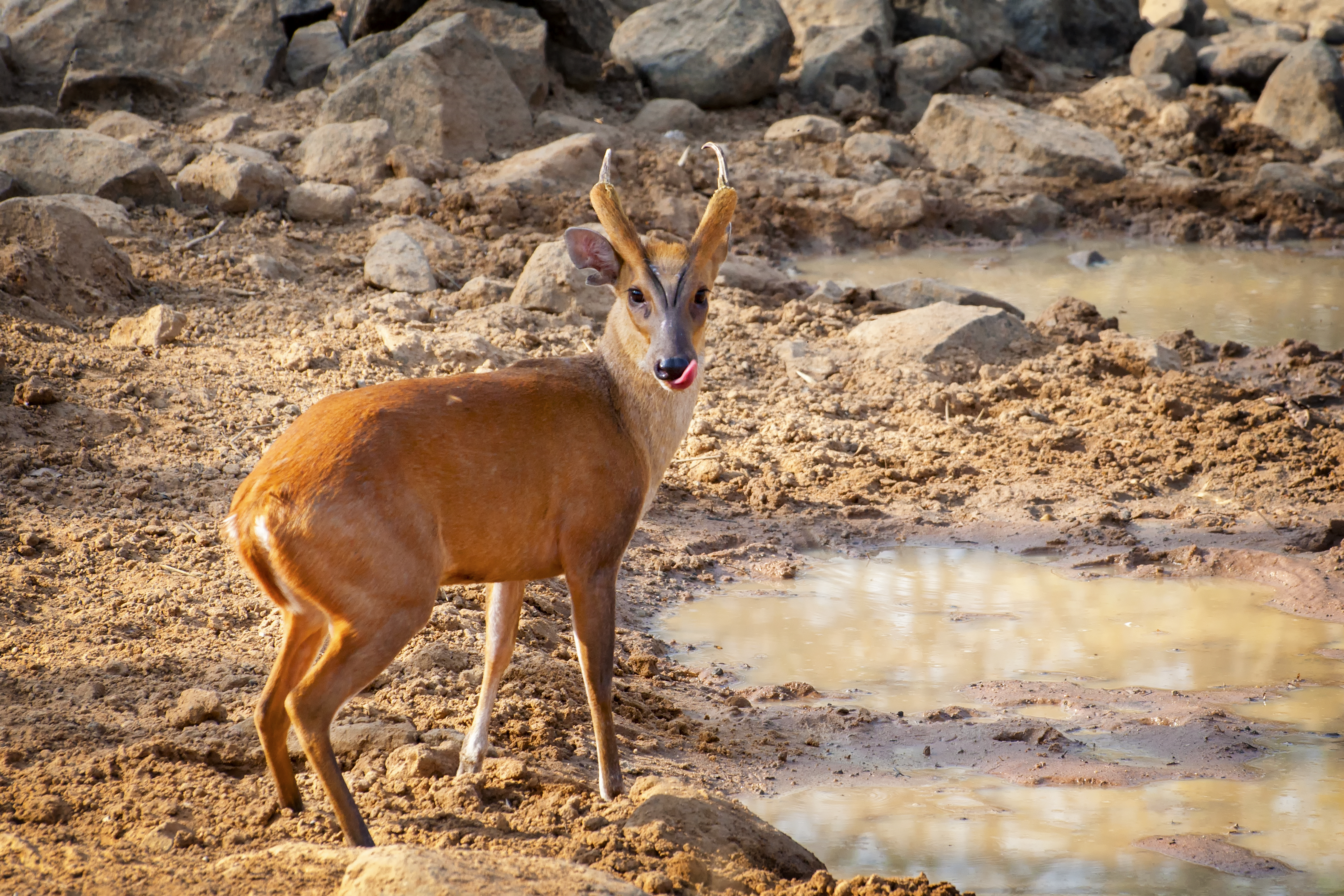|
Duboisia (antelope)
''Duboisia santeng'' or Dubois' antelope is an extinct antelope-like bovid that was endemic to Indonesia during the Pleistocene. It went extinct during the Ionian stage of the Pleistocene, about 750.000 years ago. ''Duboisia santeng'' was first described by the Dutch paleoanthropologist and geologist Eugène Dubois in 1891.Christine Hertler/ Yan Rizal (2005): Excursion guide to the Pleistocene Hominid sites in Central and East Java, JW Goethe University, Frankfurt, Germany/ ITB, Bandung, Indonesia The species is most closely related to the modern Nilgai-antelope (''Boselaphus tragocamelus'') and the Four-horned antelope (''Tetracerus quadricornis''). ''Antilope modjokertensis'' is a junior synonym for ''Duboisia santeng''.Fossil Bovidae from the Malay archipelago and the Punjab by Dr. D. A. Hooijer, Rijksmuseum van Natuurlijke Historie, Leiden Description It was a small to middle-sized antelope, with body mass estimates ranging from 32 kg to 84 kg, with an average valu ... [...More Info...] [...Related Items...] OR: [Wikipedia] [Google] [Baidu] |
Eugène Dubois
Marie Eugène François Thomas Dubois (; 28January 185816December 1940) was a Dutch paleoanthropologist and geologist. He earned worldwide fame for his discovery of ''Pithecanthropus erectus'' (later redesignated ''Homo erectus''), or " Java Man". Although hominid fossils had been found and studied before, Dubois was the first anthropologist to embark upon a purposeful search for them. Life and work Dubois was born and raised in the village of Eijsden, Limburg, where his father, Jean Joseph Balthazar Dubois, an immigrant from Thimister-Clermont, Liège, Belgium, was an apothecary, later the mayor. Interested in all phenomena of the world of nature, Eugène explored the "caves" ("''grotten''", actually underground limestone mines) of Mount Saint Peter and amassed collections of plant parts, stones, insects, shells, and animal skulls. From age 12-13 on, he attended school in the Limburg city of Roermond, boarding with a family there and then he dropped out. In Roermond he att ... [...More Info...] [...Related Items...] OR: [Wikipedia] [Google] [Baidu] |
Trinil Fauna
The Trinil Fauna is a biostratigraphic faunal assemblage composed from several Javanese sites by Ralph von Koenigswald. Von Koenigswald assigned the early hominid fossils Java Man to the Trinil Fauna after discovering the main fossil of Java Man, a skullcap catalogued as "Trinil Trinil is a palaeoanthropological site on the banks of the Bengawan Solo in Ngawi Regency, East Java, Indonesia. It was at this site in 1891 that the Dutch anatomist Eugène Dubois discovered the first early hominin remains to be found outsid ... 2", in the same geological horizon. References Works cited * See also * Trinil H. K. Fauna {{Prehistoric Asia 1891 archaeological discoveries East Java Paleontology in Indonesia ... [...More Info...] [...Related Items...] OR: [Wikipedia] [Google] [Baidu] |
Extinct Mammals Of Asia
Extinction is the termination of an organism by the death of its last member. A taxon may become functionally extinct before the death of its last member if it loses the capacity to reproduce and recover. As a species' potential range may be very large, determining this moment is difficult, and is usually done retrospectively. This difficulty leads to phenomena such as Lazarus taxa, where a species presumed extinct abruptly "reappears" (typically in the fossil record) after a period of apparent absence. Over five billion species are estimated to have died out. It is estimated that there are currently around 8.7 million species of eukaryotes globally, possibly many times more if microorganisms are included. Notable extinct animal species include non-avian dinosaurs, saber-toothed cats, and mammoths. Through evolution, species arise through the process of speciation. Species become extinct when they are no longer able to survive in changing conditions or against supe ... [...More Info...] [...Related Items...] OR: [Wikipedia] [Google] [Baidu] |
Pleistocene Mammals Of Asia
The Pleistocene ( ; referred to colloquially as the ''ice age, Ice Age'') is the geological epoch (geology), epoch that lasted from to 11,700 years ago, spanning the Earth's most recent period of repeated glaciations. Before a change was finally confirmed in 2009 by the International Union of Geological Sciences, the cutoff of the Pleistocene and the preceding Pliocene was regarded as being 1.806 million years Before Present (BP). Publications from earlier years may use either definition of the period. The end of the Pleistocene corresponds with the end of the last glacial period and also with the end of the Paleolithic age used in archaeology. The name is a combination of Ancient Greek () 'most' and (; Latinized as ) 'new'. The aridification and cooling trends of the preceding Neogene were continued in the Pleistocene. The climate was strongly variable depending on the glacial cycle, oscillating between cold Glacial period, glacial periods and warmer Interglacial, int ... [...More Info...] [...Related Items...] OR: [Wikipedia] [Google] [Baidu] |
Antelopes
The term antelope refers to numerous extant or recently extinct species of the ruminant artiodactyl family Bovidae that are indigenous to most of Africa, India, the Middle East, Central Asia, and a small area of Eastern Europe. Antelopes do not form a monophyletic group, as some antelopes are more closely related to other bovid groups, such as bovines, goats, and sheep, than to other antelopes. A stricter grouping, known as the true antelopes, includes only the genera '' Gazella'', '' Nanger'', '' Eudorcas'', and '' Antilope''. One North American mammal, the pronghorn or "pronghorn antelope", is colloquially referred to as the "American antelope", despite the fact that it belongs to a completely different family (Antilocapridae) than the true Old-World antelopes; pronghorn are the sole extant member of an extinct prehistoric lineage that once included many unique species. Although antelope are sometimes referred to, and easily misidentified as, "deer" ( cervids), true deer ... [...More Info...] [...Related Items...] OR: [Wikipedia] [Google] [Baidu] |
Trinil Dog
''Mececyon trinilensis'', the Trinil dog, is an extinct canid species that lived on the island of Java in Indonesia during the Pleistocene. Description The body size of ''Mececyon trinilensis'' been estimated at around , comparable to a dhole. This small size is the result of insular dwarfism. Habitat and ecology ''Mececyon trinilensis'' is endemic to the island of Java. It was part of the Pleistocene Trinil Fauna of Java, which dates to the late Early-Middle Pleistocene. Other animals of this Faunal assemblage were '' Bos palaesondaicus'', the Indian muntjak (''Muntiacus muntjak''), '' Bubalus paleaeokerabau'', the Dubois santeng and '' Stegodon trigonocephalus''. Other predators of the Trinil Fauna were the Trinil tiger (''Panthera tigris trinilensis'') and the leopard cat (''Prionailurus bengalensis'').Christine Hertler/ Yan Rizal (2005): Excursion guide to the Pleistocene Hominid Sites in Central and East Java, Johann Wolfgang Geothe-Universität, Frankfurt am Main ... [...More Info...] [...Related Items...] OR: [Wikipedia] [Google] [Baidu] |
Trinil Tiger
''Panthera tigris trinilensis'', known as the Trinil tiger, is an extinct tiger subspecies dating from about 1.2 million years ago that was found at the locality of Trinil, Java, Indonesia. The fossil remains are now stored in the Dubois Collection of the National Museum of Natural History in Leiden, the Netherlands. Although these fossils have been found on Java, the Trinil tiger is probably not a direct ancestor of the Javan tiger. The fossils are also an evidence that these tigers had large bodies. Their competitor's may have preyed on same individuals which resulted in limiting resources and food competition leading to extinction. The Trinil tiger probably became extinct 50,000 years ago. The Bali tiger was also not closely related to the Trinil because of their time differences. It lived in Indonesia, particularly in Java and Trinil, and according to some zoologists, it could be the ancestor of all known Indonesian subspecies. Perhaps, East Asia was a center of the origin ... [...More Info...] [...Related Items...] OR: [Wikipedia] [Google] [Baidu] |
Stegodon
''Stegodon'' (from the Ancient Greek στέγω (''stégō''), meaning "to cover", and ὀδούς (''odoús''), meaning "tooth", named for the distinctive ridges on the animal's molars) is an extinct genus of proboscidean, related to elephants. It was originally assigned to the family Elephantidae along with modern elephants but is now placed in the extinct family Stegodontidae. Like elephants, ''Stegodon'' had teeth with plate-like lophs that are different from those of more primitive proboscideans like gomphotheres and mammutids. Fossils of the genus are known from Africa and across much of Asia, as far southeast as Timor (with a single record in southeast Europe). The oldest fossils of the genus are found in Late Miocene strata in Asia, likely originating from the more archaic ''Stegolophodon,'' subsequently migrating into Africa. While the genus became extinct in Africa during the Pliocene, ''Stegodon'' persisted in South, Southeast and Eastern Asia into the Late Pleisto ... [...More Info...] [...Related Items...] OR: [Wikipedia] [Google] [Baidu] |
Bubalus Palaeokerabau
''Bubalus palaeokerabau'' is an extinct species of water buffalo that was endemic to Java during the Late Pleistocene The Late Pleistocene is an unofficial Age (geology), age in the international geologic timescale in chronostratigraphy, also known as the Upper Pleistocene from a Stratigraphy, stratigraphic perspective. It is intended to be the fourth division .... ''B. palaeokerabau'' can be distinguished from more recent domestic water buffalo introduced to Java by their larger size and their extremely long horns, which can be around long from tip to tip. References {{Taxonbar, from=Q108083546 Fossil taxa described in 1908 Bubalus Prehistoric bovids Pleistocene Artiodactyla Pleistocene mammals of Asia Pleistocene extinctions Extinct animals of Indonesia ... [...More Info...] [...Related Items...] OR: [Wikipedia] [Google] [Baidu] |
Indian Muntjac
The Northern red muntjac (''Muntiacus vaginalis'') is a species of muntjac. It is found in numerous countries of south-central and southeast Asia. The northern red muntjac inhabits various forest types, from tropical rainforests to deciduous and evergreen forests, and is adaptable to secondary forests and human-altered landscapes. Males are characterized by short antlers and elongated upper canines, which they use in territorial and mating disputes. The species is known for its distinctive bark-like calls, serving as alarm signals or communication between individuals. Taxonomy It was recently found distinct from the southern red muntjac (previously typically known as Indian muntjac) and includes all the population previously attributed to ''M. muntjak'' that are outside of Sunda and perhaps of Malaysia. The subspecies ''bancanus'', ''montanus'', ''muntjak'', ''nainggolani'', ''peninsulae'', ''pleiharicus'', ''robinsoni'', and ''rubidus'' stay in the southern red muntjac ... [...More Info...] [...Related Items...] OR: [Wikipedia] [Google] [Baidu] |
Bos Palaesondaicus
''Bos palaesondaicus'' occurred on Pleistocene Java (Indonesia) and belongs to the Bovinae subfamily. It has been described by the Dutch paleoanthropologist Eugène Dubois in 1908.Dubois, E. (1908). Das Geologische Alter der Kendengoder TrinilFauna. Tijdschr. Kon. Ned. Aardr. Gen., ser. 2, vol. 25, pp. 12351270, pl. 39. The holotype of ''Bos palaesondaicus'' is a skull from Trinil. This species is the likely ancestor to the banteng The banteng (''Bos javanicus''; ), also known as tembadau, is a species of wild Bovinae, bovine found in Southeast Asia. The head-and-body length is between . Wild banteng are typically larger and heavier than their Bali cattle, domesticated ... (''Bos javanicus'').Hooijer, D.A. (1958a). Fossil Bovidae from the Malay archipelago and the Punjab, Zoologische Verhandelingen van de Museum Leiden 38:1–112.Hooijer, D. A. (1958b). Sexual differences in the skull of fossil and recent banteng. Mammalia 22:73–75. References Bos Extinct ani ... [...More Info...] [...Related Items...] OR: [Wikipedia] [Google] [Baidu] |
Junior Synonym
In taxonomy, the scientific classification of living organisms, a synonym is an alternative scientific name for the accepted scientific name of a taxon. The botanical and zoological codes of nomenclature treat the concept of synonymy differently. * In botanical nomenclature, a synonym is a scientific name that applies to a taxon that now goes by a different scientific name. For example, Linnaeus was the first to give a scientific name (under the currently used system of scientific nomenclature) to the Norway spruce, which he called '' Pinus abies''. This name is no longer in use, so it is now a synonym of the current scientific name, '' Picea abies''. * In zoology, moving a species from one genus to another results in a different binomen, but the name is considered an alternative combination rather than a synonym. The concept of synonymy in zoology is reserved for two names at the same rank that refers to a taxon at that rank – for example, the name ''Papilio prorsa'' Linnaeus, ... [...More Info...] [...Related Items...] OR: [Wikipedia] [Google] [Baidu] |




